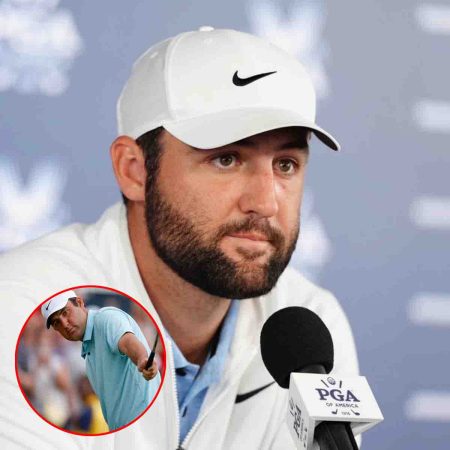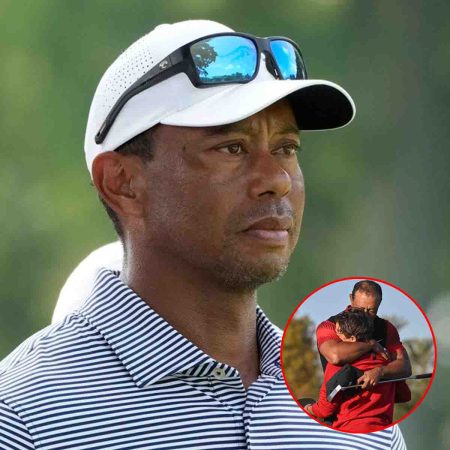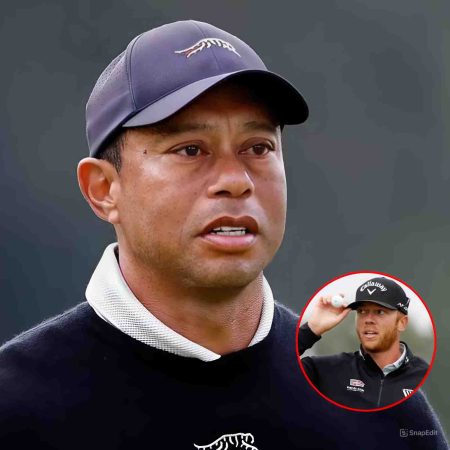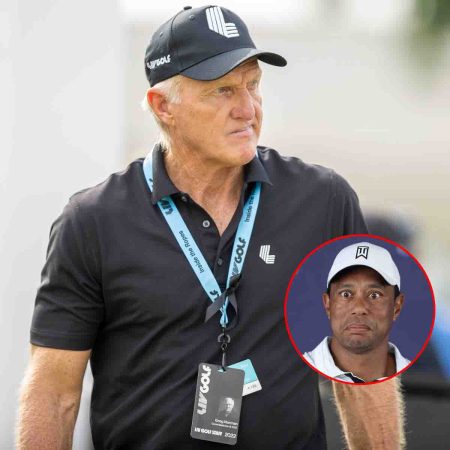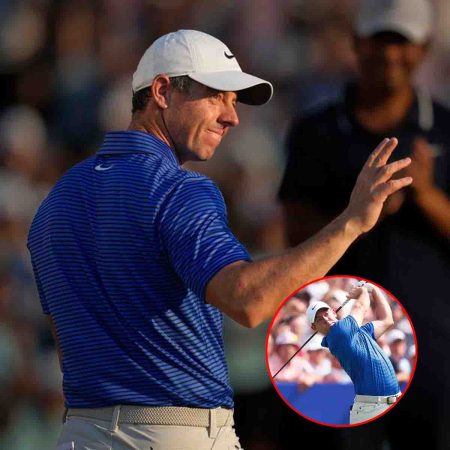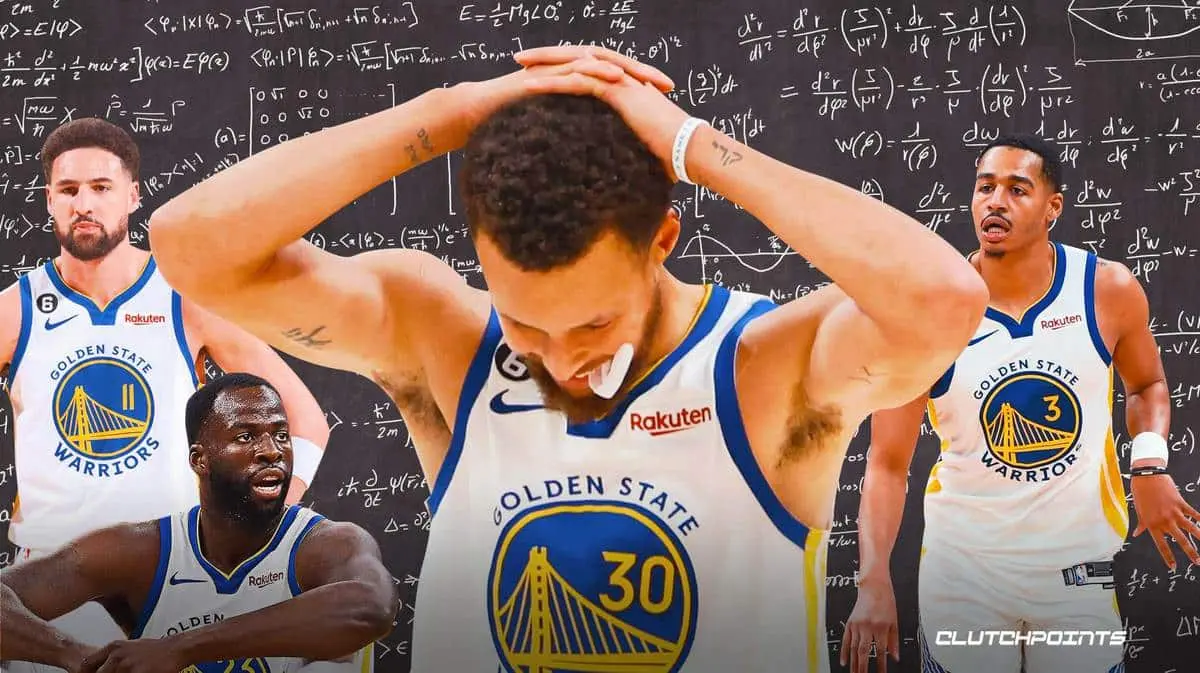
The Golden State Warriors’ attempt to defend their championship has not exactly gone as planned.
At 29-29 entering the six-week sprint toward the regular-season finish line, the defending champions are ninth in a tightly-packed Western Conference, with outside chances of both rising to third in the standings and missing the play-in tournament altogether.
But before turning the page to a stretch run that could decide the long-term fate of this roster’s core, it’s worth looking back on how the Warriors reached the All-Star break as nothing more than mediocre. Let’s hand out report cards for some of Golden State’s most notable players based on the season’s de facto first half.
Warriors NBA All-Star break report cards
Stephen Curry
The reigning Finals MVP was playing perhaps the best basketball of his career before going down with a left shoulder injury in mid-December, struggling to regain that peak form upon returning to the floor a month later. When Steph Curry tweaked his left leg in an early February win over the Luka Doncic-less Dallas Mavericks, his already long-shot chances at a second MVP were dashed entirely.
Despite those relative labors post-shoulder subluxation, though, Curry has still been among the most impactful players in basketball when on the floor this season.
His +10.9 on-off net rating ranks in the 95th percentile league-wide, right in line with eye-popping career norms, per Cleaning the Glass. Curry is hitting a ridiculous 47.3% on 6.1 pull-up triples per game, best in the NBA, and finishing an easy career-high 75.8% of his tries at the rim, according to NBA.com/stats — better accuracy from there than Giannis Antetokounmpo.
The one lingering stain on Curry’s near-pristine offensive resumé so far this season? Crunch-time shooting and decision-making foibles that have helped shove Golden State down to a -7.3 net rating during clutch situations, seventh-worst in the NBA.
Here’s hoping Curry is back on the floor soon after the All-Star break, leading Golden State on a second-half surge up the Western Conference standings — if so, surely overcoming those lingering crunch-time woes in the process.
Grade: A-
Draymond Green
Draymond Green wants to be blamed for the Warriors’ bottom-half defense because he believes his sweeping influence on the court and in the locker room are supposedly enough to lift this team to sustained excellence on that side of the ball all by itself.
It’s commendable Green has personally taken the onus of shouldering the responsibility for Golden State’s wildly inconsistent defensive performance so far in 2022-23. His pointedly public-facing burden looms even larger in context of the preseason punch that threatened to completely derail the Dubs’ title defense before it ever began, too.
But even if Green can no longer be the game-long, all-court terror he was in his physical prime, he has still been a clear First-Team All-Defense contender this season. To the fleeting extent Golden State has defended at a level worthy of winning back-to-back championships, Green’s presence is easily the biggest reason why.
The Warriors give up a whopping 9.7 fewer points per 100 possessions with him on the floor, in the 98th percentile among all players, per Cleaning the Glass. Their debilitating foul problems vanish with Green in the game; no player in basketball has a more drastic positive effect on his team’s foul rate. Green’s all-time genius as back-line quarterback and ability to switch across five positions aren’t the only driving forces behind those gaudy numbers, either.
Perhaps the most impressive one for a 6’6, 30-something big man coming off a summer spent rehabbing degenerative disc issues in his back? Green is forcing opponents into 48.2% shooting at the rim when he’s the primary defender, second behind Defensive Player of the Year frontrunner Jaren Jackson Jr., according to NBA.com/stats.
Green has been better on offense than expected, too, finishing with more craft and explosiveness than the past couple years while serving as a much-needed stabilizing presence of playmaking and organization for Steve Kerr’s second unit. No one on the roster creates offensive pace like Green. His utility as a screener and dribble hand-off operator is either unparalleled or close to it across the NBA.
The best indicator of Green’s performance this season and value to the Warriors: His net on-off rating is almost a full point better than Curry’s elite-level mark.
Grade: A-
Klay Thompson
Remember Klay Thompson’s hideous start to 2022-23, so ugly that some extra prominent NBA talking heads were calling his days as a quality starter over?
Don’t feel too bad if all that awful shot selection and all those clanked jumpers register as barely more than a hazy memory as the second half of the season dawns. That’s just how drastic Thompson’s turnaround has been since a mid-November team meeting, one that looms even larger than the numbers suggest due to prolonged absences of Curry and Wiggins.
Klay is averaging 24.3 points since Dec. 1, connecting on 40.2% of an incredible 11.3 3-point attempts per game. He has also shot roughly 47% on 2-pointers over that timeframe, a quietly encouraging number given additional usage and self-creation responsibilities with Curry missing so much time.
Thompson, obviously, isn’t the player he was pre-injury. That reality hasn’t stopped him from exploding for multiple games with double-digit triples, though, and even turning back the clock defensively on certain possessions. He’s not a scalable plus on that end anymore, lacking the lateral twitch to consistently contain explosive ball handlers, but Thompson still isn’t a minus defensively — plenty good for a guy who remains one of the game’s most dangerous, flammable shooters.
Grade: B+
Jonathan Kuminga
The James Wiseman experiment is finally over. Bob Myers brought back Gary Payton II at the trade deadline, existing injury and extended absence be damned, at least in part due to Moses Moody’s inability to crack Steve Kerr’s rotation. We’ll get to Jordan Poole.
Jonathan Kuminga, on the other hand, has lived up to his end of the bargain as a crucial piece of the Warriors’ defunct second timeline. He has done pretty much everything realistically expected of him after a tough start to the season, having emerged as a clear-cut bench cog on both sides of the ball with the potential to close tight games against specific opponents.
Arguably the Dubs’ most disruptive on-ball defender, Kuminga has proven capable of checking star point guards and oversized wings alike. Though still prone to lapses away from the ball, the 20-year-old has been more reliable in that regard this season than as a rookie, often making multiple efforts and flying in from the weak side for help blocks at the rim.
Kuminga has grown more comfortable in a limited offensive role, too, shooting 47.1% from deep over the last 12 games for before All-Star break — albeit on limited volume — and even flashing isolation mid-range chops of late without doing more than what’s asked of him. His post game against mismatches has been a revelation. Kuminga generally maintains offensive flow and continuity as a passer as well, even making occasional value-add dimes that hint at a starring offensive ceiling.
Kuminga hasn’t been perfect this season, even in wake of becoming a nightly member of the rotation. But that’s true of all second-year players, especially those playing in an advanced two-way system like Golden State’s — not to mention sophomores with limited high-level playing experience before getting to the league.
Grade: B
Andrew Wiggins
Andrew Wiggins was building on the breakout playoff performance that suddenly made him a top-tier 3-and-D wing before being sidelined in early December for the longest stretch of his career.
He hasn’t been close to the same player since returning from that adductor injury and subsequent illness, and not just because his once red-hot hand from deep has cooled considerably. More problematic for Golden State has been his lagging edge and intensity defensively and on the glass — the two areas he improved most during the Warriors’ 2022 title run.
Wiggins proved last spring that he can flip the proverbial switch even facing top-tier competition. He has done it for isolated stretches since finally getting back on the floor in mid-January, no doubt spurred by constructive criticism from the coaching staff and sometimes being replaced by Donte DiVincenzo — who has been absolutely stellar the past couple months, by the way — in the crunch-time closing five.
It’s a shame Wiggins’ career-best offensive season was interrupted by injury. He’d no doubt earn a higher grade if the health bug hadn’t started biting him for the first since he entered the league eight years ago. As is, though, Wiggins’ frustrating tendency to float in and out of games has been among the most underrated aspects of Golden State’s disappointing season to date.
Grade: C-
Jordan Poole
The raw numbers suggest Poole has taken another step forward following a stellar 2021-22 campaign. His 20.9 points and 4.5 assists per game are both career highs, as is his free throw rate. Like Thompson, he too overcame a brutal start shooting the ball, entering the most important portion of the season with a true shooting percentage of 57.4 — just a hair below league average.
But the progress that would’ve made Poole a truly central ingredient in the Dubs’ championship formula, unfortunately, just hasn’t come.
He’s easily Golden State’s most exploitable defender, a bright red target for ball handlers of all sizes. No one expects Poole to hold up in isolation when Jayson Tatum and Kawhi Leonard force him into the action, but Poole’s defensive issues extend far beyond there. He offers little resistance at the point of attack, dies on far too many screens, and misses as many help rotations as anyone in Kerr’s rotation.
Poole’s shot selection is iffy at best, and not just when Curry is wide open next to him. Anointed before the season as second unit alpha dog, he quickly proved ill-equipped for that role, unable to create efficient offense for himself and his teammates without Curry or Green next to him. Poole has been disappointing as a long-range shooter, too, hitting just 31.2% of his pull-up triples and a below-average 35.6% of his catch-and-shoot tries, per NBA.com/stats.
In an ideal world, the Warriors would’ve made the Poole Party lineup a fixture this season after Kerr realized during last year’s playoffs it couldn’t stay above water defensively. The quintet with Poole in place of Looney next to Golden State’s other starters has a ho-hum +2.9 net rating, per Cleaning the Glass. The Dubs’ traditional starters, by contrast, boast a dominant +22.1 net rating, second in the NBA among lineups that have notched at least 300 possessions.
It’s too early to write Poole’s season off as a waste. He’s still only 23, not even two full seasons removed from the G League, and took his game to new heights in last year’s playoffs. Maybe he ramps it up again come April and May, rendering the 82-game grind largely moot.
Still, there’s no getting around what has been obvious to anyone watching the Warriors since 2022-23 tipped off. Poole’s all-around game just hasn’t developed the way this team hoped, putting it among Golden State’s biggest problems during a dismaying season so far.
Source: https://clutchpoints.com



